
T
ẠP CHÍ KHOA HỌC
TRƯ
ỜNG ĐẠI HỌC SƯ PHẠM TP HỒ CHÍ MINH
Tập 22, Số 3 (2025): 443-454
HO CHI MINH CITY UNIVERSITY OF EDUCATION
JOURNAL OF SCIENCE
Vol. 22, No. 3 (2025): 443-454
ISSN:
2734-9918
Websit
e: https://journal.hcmue.edu.vn https://doi.org/10.54607/hcmue.js.22.3.4493(2025)
443
Research Article1
TWO NEW STRAINS OF MICROALGAE Scenedesmus sp.
RECENTLY ISOLATED AND IDENTIFIED BY 18S SEQUENCING
FROM THE CAN GIO MANGROVE BIOSPHERE RESERVE
Do Thanh Tri*, Lai Thi Diem Phuc, Quach Van Toan Em
Ho Chi Minh City University of Education, Vietnam
*Corresponding author: Do Thanh Tri – Email: tridt@hcmue.edu.vn
Received: September 06, 2024; Revised: March 21, 2025; Accepted: March 23, 2025
ABSTRACT
The microalgae Scenedesmus, belonging to the Chlorophyta phylum, is a widely distributed
freshwater algae species. Many species from this genus are found in the Can Gio mangrove
biosphere reserve, where they play a significant role in the aquatic environment. In this study, two
microalgae strains, Scenedesmus CG01 and CG03, were newly isolated from two different sampling
sites within the Can Gio mangrove biosphere reserve. These two strains exhibit similar
morphological features typical of the genus Scenedesmus. PCR amplification, sequencing, and
identification based on the 18S DNA sequence confirmed that both strains, CG01 and CG03, belong
to Scenedesmus sp. The 18S DNA sequences of these strains differ from those of Scenedesmus sp.
CCAP 217/7 and CCAP217/8 in GenBank. The phylogenetic analysis of the 18S sequences
revealsthat CG01 and CG03 are in a distinct cluster, separate from the remaining samples. This
research on the isolation and accurate identification of species provides an important foundation for
future studies on the application of microalgae.
Keywords: 18S; Can Gio; Scenedesmus
1. Introduction
Scenedesmus is a diverse and widely found genus of microalgae, commonly present in
freshwater ponds, lakes, rivers, and streams, but seldom in brackish water environments.
These microalgae can live in various environmental conditions, but prefer water bodies with
mild acidity and low salinity (Canter-Lund & Lund, 1995). In addition to aquatic
environments, some Scenedesmus species can also grow in moist soil. Similar to many other
algal species, Scenedesmus microalgae is a group of productive organisms and an important
Cite this article as: Do, T. T., Lai, T. D. P., & Quach, V. T. E. (2025). Two new strains of microalgae
Scenedesmus sp. recently isolated and identified by 18S sequencing from the Can Gio Mangrove Biosphere
Reserve. Ho Chi Minh City University of Education Journal of Science, 22(3), 443-454.
https://doi.org/10.54607/hcmue.js.22.3.4493(2025)

HCMUE Journal of Science
Do Thanh Tri et al.
444
food source for other species in the water body (Janse van Vuuren, 2006). Some microalgae
species in this group have been utilized as food or raw material for biodiesel production
(Assunção et al., 2023; Colla et al., 2020). Studies on microalgae biodiversity in the Can Gio
mangrove biosphere reserve have also shown that the microalgae Scenedesmus have been
found in freshwater environments. However, studies have mainly focused on sampling,
formalin fixation, and morphological identification of the microalgae (Pham, 2017).
Morphologically, Scenedesmus exists as unicells or cells, and can be elliptical, oval,
spherical, or rhombic. They are also commonly found in coenobia with multicellularity
inside a parental mother wall with the ends of round or pointed cells aligned or staggered,
sticking together, with spikes or without spines. The spikes are formed in the head of the
terminal cell in the coenobia, their function is to help them defend against predation. The
coenobia may consist of 2, 4, or 8 cells, and may even reach 16 to 32 cells (Janse van Vuuren,
2006). This genus exhibits a wide range of diversity, encompassing numerous species, which
renders morphological identification potentially inaccurate. The inaccuracy of identification
based on morphological traits stems from the diminutive size and simple structure of these
microalgae. Furthermore, the rapid emergence of new species contributes to the issue, as
many microalgae possess similar external morphologies (Gross, 2004). The development of
identification techniques based on DNA barcoding has provided an additional basis for
identifying microalgae species. In addition, DNA sequence data also provides evidence
about the evolutionary origin of green microalgae, thereby contributing to correcting
incorrect classifications in the old classification system (Baudelet et al., 2017).
In this study, monoclonal microalgal strains of the genus Scenedesmus were isolated
from various locations within Can Gio mangrove biosphere reserve. These strains were
meticulously identified through a dual approach, analyzing morphological characteristics
and 18S ribosomal DNA sequences. Accurate taxonomic identification of microalgae species
is an important basis for future research on microalgae applications.
2. Materials and methods
2.1. Collecting microalgae samples
Two algae-containing water samples obtained at two different coordinates in the Can
Gio mangrove biosphere reserve are denoted as sample 1 (10.487603, 106.873403) and
sample 2 (10.651512, 106.783311). The water samples were kept cold and transported to the
laboratory for analysis within 48 hours. In the laboratory, the water samples were examined
under an Olympus BX-10 microscope with a 100× objective to identify the presence of
green algae.

HCMUE Journal of Science
Vol. 22, No. 3 (2025): 443-454
445
2.2. Isolation of monoclonal microalgae
The goal of isolating and purifying algae is to obtain monoclonal algal strains without
any contamination by other microorganisms (Fernandez-Valenzuela et al., 2021). The
collected samples were observed under a Leica ATC 2000 microscope using S-eye camera
software. Single microalgae cells were isolated from the natural water samples using a
micropipette and transferred into the BG11-H medium to promote proliferation. Green
microalgae species can grow on the agar surface. The isolation of monoclonal algal strains
was continued by culturing on agarose (Gross, 2004). The solid medium was prepared by
adding 10 g agarose/L of BG11-H medium, then boiled at 95°C. When the medium was
cooled to around 60°C, it was poured into Petri dishes, cooled, and stored at 4°C. The
cultures were cultured at a temperature of 24–26°C, under white LED light with an intensity
of 40 𝜇𝜇mol photon/m2/s, a light/dark cycle of 14/10 h, for a period of 2 to 4 weeks until the
appearance of algal colonies. Monoclonal algal colonies were then transferred into the
BG11-H medium and further cultured for proliferation (Andersen, 2005). The culture
medium was supplemented every two weeks and subcultured to maintain monoclonal strains
of microalgae.
2.3. Methods for determining morphological characteristics
Monoclonal algal cells were observed under an optical microscope to examine their
morphological characteristics and to determine the genus or family of the algal samples. Key
morphological features, including cell size, shape, chloroplast structure, and modes of
reproduction, was recorded, analyzed, and compared with reference microalgae in algal
collections (Culture Collection of Algae and Protozoa, Central Collection of Algal Cultures)
as well as with descriptions in the literature on the genus Scenedesmus.
2.4. DNA extraction and PCR reactions
The total DNA of monoclonal algal cells was extracted using the ABT kit (Biological
Solutions Co., Ltd, Vietnam) and served as the template for the PCR reaction. The 18S rRNA
gene sequence was selected for amplification using specific primer pairs. Each PCR reaction
contained the following components: 12,5 µL 2X Mytaq Mix, 0,5 µL primer 18S-FA2 (5’-
ACCTGGTTGATCCTGCCAGTA-3’), 0,5 µL primer 18S-RB2 (5’-
GATCCTTCTGCAGGTTCACCTACG-3’) (Maltsev & Konovalenko, 2017), 0,5 µL
DNA template, and 11,5 µL H2O. The annealing temperature for the primer pairs was
optimized by testing within the range of 50–53 ℃. The products of the DNA extraction and
PCR reactions were analyzed by electrophoresis on a 1% agarose gel.
2.5. Microalgae identification method based on DNA sequence comparison
The 18S rRNA PCR products were sent to 1st Base, Malaysia, for bidirectional
sequencing using the primer pairs 18S-FA2 and 18S-RB2. The resulting DNA sequences
were viewed and edited using ChromasPro Version 2.6.6 and SeaView 5.0.5 software. These

HCMUE Journal of Science
Do Thanh Tri et al.
446
programs were used to align and merge the sequences to create consensus sequences. These
consensus sequences were then compared with sequences available in GenBank using the
BLAST tool (https://blast.ncbi.nlm.nih.gov/) for identification of monoclonal algal
strains.Based on the BLAST results, species identification was conducted. If the identity
between the query sequence (the 18S sequence of the isolated microalgal strain) and the
sequences available in GenBank exceeds 99.0%, the strain was considered to belong to the
same species as GenBank sample. If the identity is between 98.0% and 99.0%, this suggested
that the microalgal strain in this study and the published strains may not be definitively the
same species. In such cases, the symbol "cf." (an abbreviation for the Latin term "confer,"
meaning "compare to") was used, as in Chlorella cf. vulgaris, to indicate some uncertainty
in the identification. If the sequence identity was less than 98.0%, the symbol "sp." is used,
as in Chlorella sp. (Fawley & Fawley, 2020). In addition, the morphology of the isolated
strain was also compared with the species in the BLAST results to provide the most accurate
taxonomic data possible.
2.6. Phylogenetic tree construction
The sequences used for phylogenetic tree construction include 18S DNA sequences
obtained from this study and sequences published in GenBank. The sequences selected from
GenBank must have reliable species names from previously published research and are
phylogenetically closely related to the isolated microalgal strains. These sequences were
aligned using the MUSCLE algorithm in MEGA software. Neighbour-joining (NJ) trees,
based on Kimura 2-Parameter (K2P) distances, were generated using MEGA to illustrate the
molecular phylogeny. Some sequences from GenBank were also selected as outgroups
during the phylogenetic analysis of microalgae strains isolated from the Can Gio mangrove
biosphere reserve. The phylogenetic trees were constructed with 1,000 iterations to
determine the bootstrap value.
3. Results and discussion
3.1. Results of isolation of a single microalgae strain
Green microalgae strains proliferated well on the surface of agarose containing BG11-
H medium and algal colonies appeared after 1–2 weeks and are visible by eye. Following
isolation and proliferation, two strains of green microalgae, initially identified as belonging
to the genus Scenedesmus based on morphological characteristics, were successfully
isolated. These two microalgae strains were denoted CG01 (isolated from sample 1) and
CG03 (isolated from sample 2), respectively.

HCMUE Journal of Science
Vol. 22, No. 3 (2025): 443-454
447
Figure 1. Morphology of two strains of green microalgae CG01 (A), CG03
(B) isolated from the Can Gio reserve
Two microalgae strains of Scenedesmus CG01 and CG03 exhibit similar morphology.
Most of the cells are unicellular, green, ovoid, or oval, and vary in size, about 5–7 μm long
and about 2–4 μm wide (Figure 1). Most cells of the two microalgae strains Scenedesmus
sp. CG01 and CG03 have cup-shaped chloroplasts containing a pyrenoid (Figure 2A). The
presence of a nucleus and chloroplasts containing a pyrenoid inside is one of the basic
characteristics for identifying this group (Janse van Vuuren, 2006; Scenedesmus, n.d.).
Figure 2. Cell structure Scenedesmus CG01 and CG03 (A) and asexual reproduction by
spores (B) (×100) (1: pyrenoids; 2: chloroplasts; 3: cell walls; 4: a common wall of 4 spores,
5: spores)
The Scenedesmus microalgal strains CG01 and CG03 undergo asexual reproduction
through sporulation, during such process, the mother cell produces 2-4 endospores.
Subsequently, the mother cell forms a thick, transparent outer wall without spines, resulting
in an enlarged size compared to its normal state (Figure 2B). Once the endospores attain a
certain size, the sporangial cell wall ruptures, releasing the daughter spores. Previous studies
have demonstrated that this asexual mode of sporulation is a common reproductive
mechanism in this microalgal genus. While sexual reproduction has been documented in








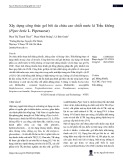

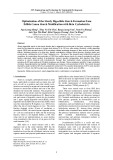
![Cẩm Nang An Toàn Sinh Học Phòng Xét Nghiệm (Ấn Bản 4) [Mới Nhất]](https://cdn.tailieu.vn/images/document/thumbnail/2025/20251225/tangtuy08/135x160/61761766722917.jpg)







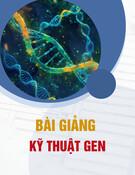
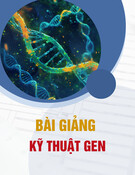
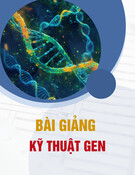
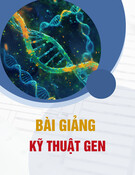
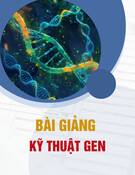

![Hướng dẫn giải chi tiết bài tập phân li, phân li độc lập: Tài liệu [mới nhất]](https://cdn.tailieu.vn/images/document/thumbnail/2025/20251204/lethu2868@gmail.com/135x160/84711764814448.jpg)
